Pasta Vs Noodles (Substitution Tips + Crucial Differences)
Apr 10, 2024
Demystifying pasta vs noodles with key differences and smart substitutions. Here’s what you need to know before you swap one for the other!

I’ve got you covered here if you’re trying to figure out if you can use them interchangeably in a recipe.
Pasta Vs Noodles: What’s The Difference?
“Pasta” and “noodles” are not interchangeable terms.
While all pasta is technically a type of noodle, not all noodles are considered pasta.
Pasta specifically refers to Italian-style noodles made from durum wheat semolina flour and water. While most fresh pasta contains eggs, store-bought variants might not.
On the other hand, noodles encompass a broader category of elongated strands or ribbons made from various ingredients like buckwheat flour, rice flour, mung bean starch, yam etc.
While pasta is popular in Italian cuisine worldwide, noodles have a broader cultural presence worldwide.
FAQs
Before we dive in, here are some quick answers to commonly-asked questions!
No, noodles and pasta are not necessarily the same. They may differ in terms of ingredients, flavor, origin, and texture.
The answer is yes and no. Pasta works well with hearty sauces, while Asian noodles are often used in soups, stir-fries, and noodle-based dishes. However, in some recipes, you may be able to substitute one for the other.
Traditional pasta and noodles are made from wheat flour, which contains gluten. However, gluten-free versions of both pasta types are available in specialty stores.
Pasta and noodles are both cooked by boiling them in salted water until they reach the desired level of doneness. Pasta typically takes around 8-10 minutes to cook, while egg noodles cook in approximately 6-8 minutes.
Pasta originated in Italy, and is a staple in Italian cuisine. Noodles have diverse cultural origins, including Chinese and Eastern European cuisines.
Yes, both can be made at home using a pasta machine. Pasta can be made by rolling out pasta dough and cutting it into wide strips, while egg noodles are made by combining flour, water, and eggs, then rolling out and cutting the dough into desired shapes.
No, egg noodles are not the same as pasta. They can differ widely in their ingredients and preparation.
Egg noodles and traditional pasta may have similar textures, but they do not taste quite the same.
Now let’s take a closer look!
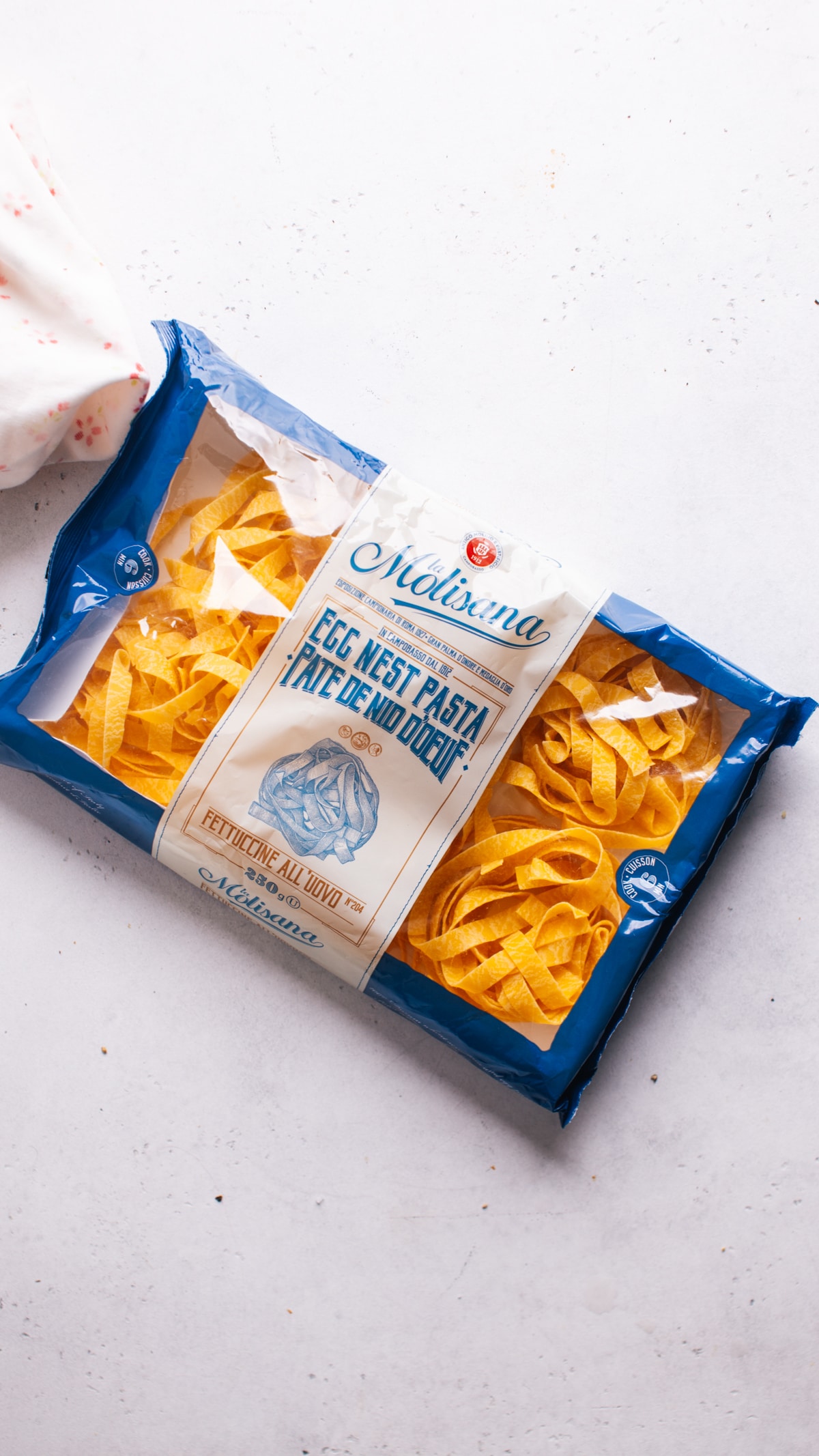
Pasta Vs Noodles: Ingredients
Here is a summary of the ingredients in each ingredient:
- Pasta: Pasta is typically made from durum wheat semolina flour and water. It may or may not contain egg in its recipe. Here’s my basic homemade pasta recipe.
- Egg noodles: Egg noodles as the name suggests, are made with flour, water, and eggs.

Pasta Vs Noodles: Texture + Taste
Here are the key points around their textures and tastes:
- Pasta: Pasta comes in a huge variety of shapes, from long and flat to spirals, and has a slightly chewy texture. It has a neutral flavor that pairs well with various sauces and toppings.
- Egg noodles: Egg noodles tend to be softer and more tender compared to pasta. These noodles may have a richer egg taste than most pasta.
Pasta Vs Noodles: Origins
Here is what you need to know about their origins:
- Pasta: Pasta originated in Italy. It may traditionally be served with hearty meat pasta sauce, delicate cream sauces (like this seafood pasta with cream sauce), or stuffed, like this lobster ravioli with lemon cream sauce. In North America, we often eat it cold in salads (see how do you make a macaroni salad)
- Egg noodles: Egg pasta ribbons originated in various cuisines, including Chinese and Eastern European. They are commonly used in chicken noodle soup and chow mein noodles. (I love using egg noodles in miso soup.)
Pasta Vs Noodles: Nutrition
Comparing noodles and pasta for calories, protein and fiber is difficult because with so many varieties to consider. There’s huge variation in their composition. But here’s a simplified snapshot:
- Fiber: Whole wheat pasta typically contains more fiber than traditional white pasta or egg noodles. This is because whole wheat pasta retains more of the wheat grain, including the fiber-rich bran layer. However, some specialty noodles, like soba noodles made from buckwheat flour, may also have higher fiber content.
- Protein: Egg noodles may contain slightly more protein than boxed pasta made with just water because they are made with eggs, which are a good source of protein. However if comparing pasta and noodles both made with egg, pasta made with durum wheat may have higher protein (since it’s the highest-protein variety of wheat, vs. basic all-purpose flour)
- Alternative Pasta: Some pasta varieties, such as those made with legume flours like chickpea or lentil pasta, can have higher protein and fiber content than both traditional pasta and egg noodles.

Pasta Vs Noodles: Which Is More Popular?
- Pasta: Pasta is popular in Italian cuisine and is widely enjoyed in many regions around the world.
- Egg Noodles: Noodles have a broader cultural presence, being used in diverse dishes across different cuisines. They are especially popular in Asian and Eastern European cuisines, used in soups, stir-fries, and noodle-based dishes.
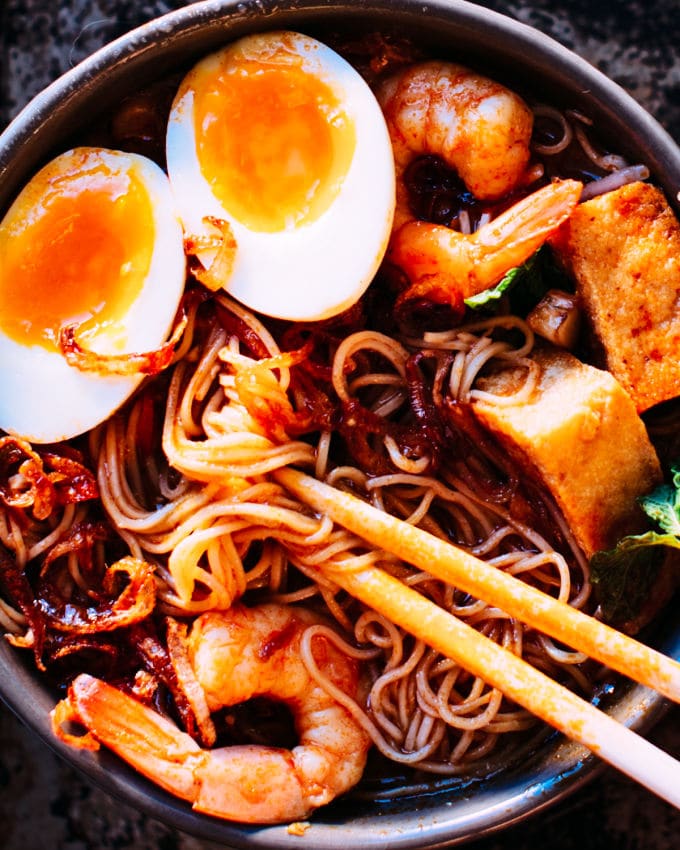
How to Cook Pasta vs Noodles
Here’s a quick look at how each type of noodle is cooked. As you can see, the cooking times are a little different:
Cooking Pasta
- Boil water: Fill a large pot with water and bring it to a rolling boil. Add salt to the water.
- Add pasta: Once the water is boiling, gently add the pasta to the pot. Stir gently to prevent sticking.
- Cook until al dente: Allow the pasta to cook, stirring occasionally, until it reaches the desired level of doneness, typically around 8-10 minutes for dried pasta. Fresh pasta takes only 2-3 minutes. Test for doneness by tasting a piece; it should be firm to the bite (al dente).
- Drain: Once the pasta is cooked to your liking, remove the pot from the heat and carefully drain the pasta in a colander. Shake off excess water and serve immediately. If you need to keep it aside until later – toss it in a little olive oil.

Cooking Egg Noodles
- Boil Water: Fill a large pot with water and bring it to a boil. Add salt.
- Add egg noodles: Once the water is boiling, add the egg noodles to the pot. Stir gently to separate the noodles and prevent clumping.
- Cook until render: Allow the egg noodles to cook, stirring occasionally, until they are tender but still slightly firm to the bite, usually around 6-8 minutes.
- Drain and rinse (Optional): Once the egg noodles are cooked, drain them in a colander. Some recipes may call for rinsing the noodles under cold water to stop the cooking process and prevent them from sticking together.
- Serve: After draining, the egg noodles are ready to be served. They can be enjoyed with various sauces, stir-fries, soups, or as part of noodle-based dishes.
Adjust cooking times based on your preferences for texture.
Egg Noodles Vs Pasta
Egg noodles specifically can be quite similar to European pasta. They are crafted from flour, water and, as their name implies, they always contain eggs.
With origins in various cuisines, including Chinese and Eastern European, egg noodles are often found in soups, stir-fries, and stroganoff.

Can Pasta Replace Noodles In Recipes?
While certain types of pasta and certain types of noodles often share similarities in shape and texture, they are relatively different in terms of texture and flavor.
In most recipes, you may substitute long pasta for long egg noodles and vice versa.
Don’t try to swap in rice noodles, sweet potato noodles, or anything other than a wheat and egg-based noodle for Italian pasta dishes.
Use a similar shape noodle to what the original recipe called for in a pasta shape to make sure your results are what you expect.
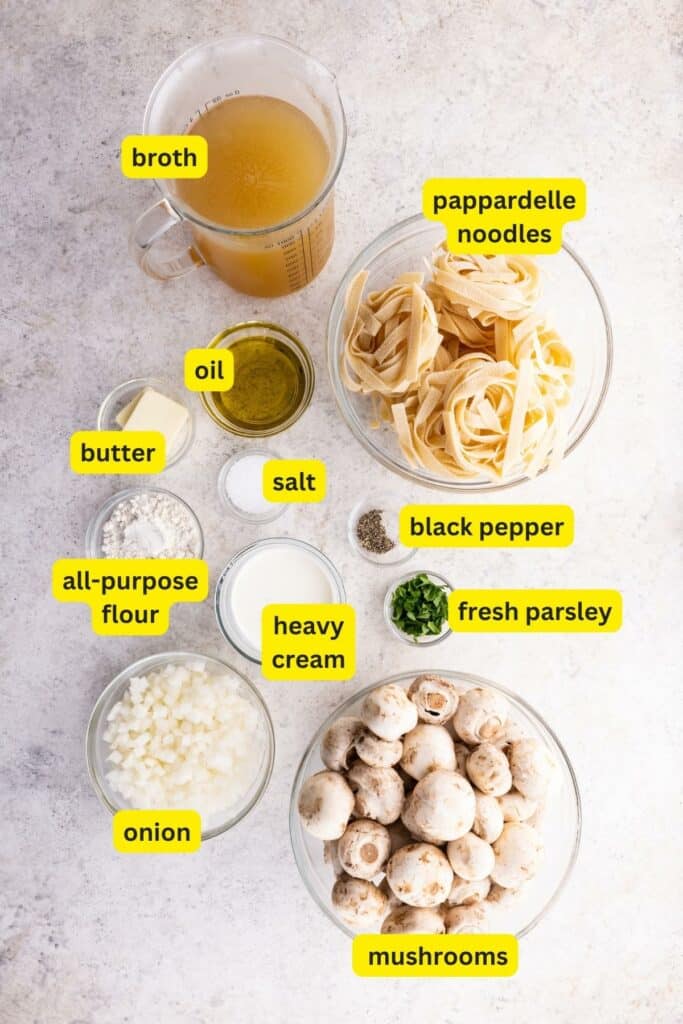
Pappardelle Vs Egg Noodles
People commonly ask specifically about the difference between pappardelle and egg noodles.
Are egg noodles the same as pappardelle?
No, egg noodles and pappardelle differ in terms of ingredients, flavor, origin, and texture.
Can I use pappardelle and egg noodles interchangeably in recipes?
The answer is yes and no. Pappardelle works well with hearty sauces, while egg noodles are often used in soups, stir-fries, and noodle-based dishes. Broad flat egg noodles can be substituted for pappardelle and vice versa.
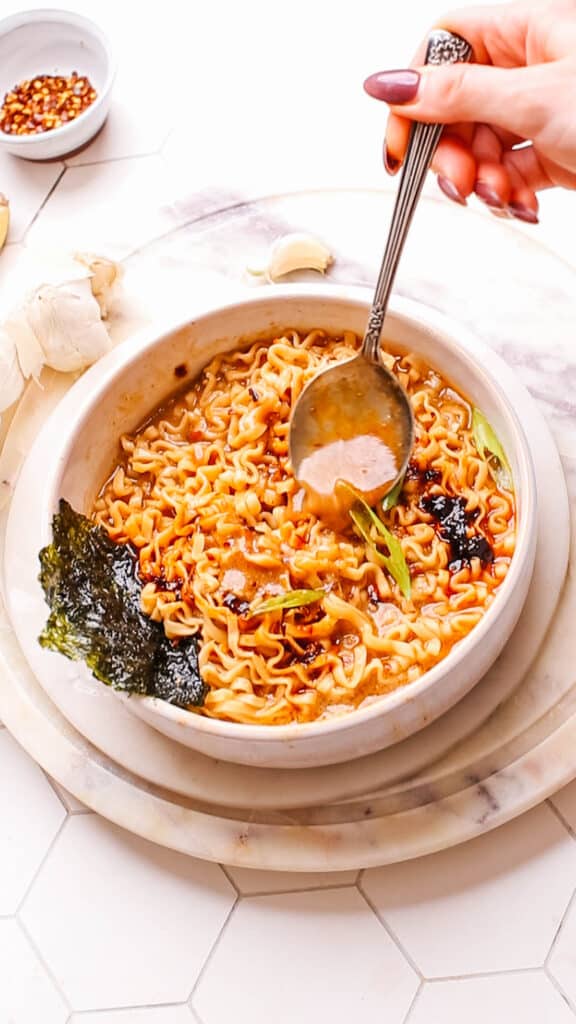
Favorite Noodle Recipes to Try
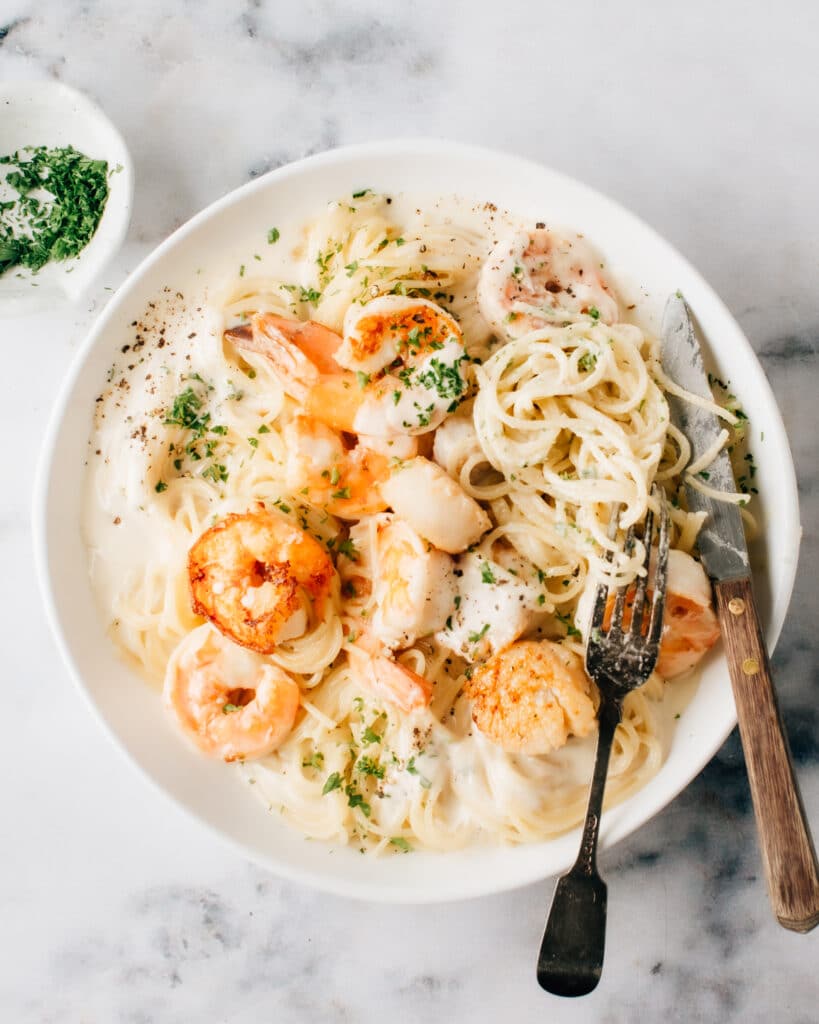
Popular Pasta Recipes
- 30-minute creamy Mushroom Pappardelle recipe
- Easy Seafood Pasta with Cream Sauce
- Super Creamy Baked Mac and Cheese with butter breadcrumb topping.
- Slow Cooker Lasagna with meat and tomato sauce
- Asiago Tortelloni Alfredo with Grilled Chicken
- Lobster Ravioli Sauce
- The Best Pasta Meat Sauce or Lamb Pasta Sauce for spaghetti
- Lazy Lasagna with Just 3 Ingredients
- Greek Pasta Salad with Vegetables
- Creamy Beet Pasta Sauce
- Chicken Fettuccine with Chard Pesto
- Best Ever Gnocchi Sauces
Next Reading: Couscous vs Pasta








